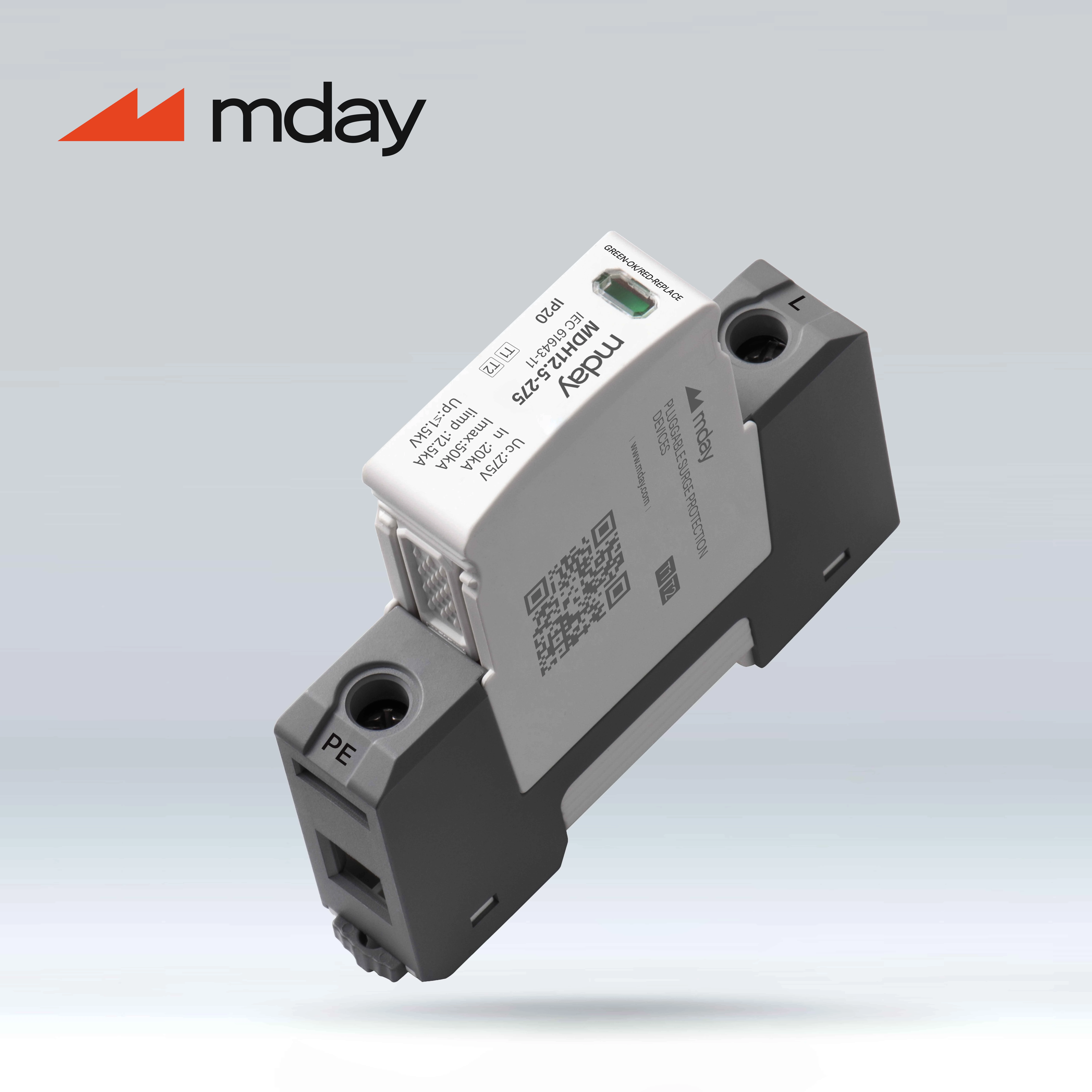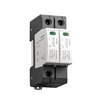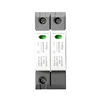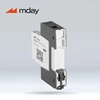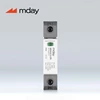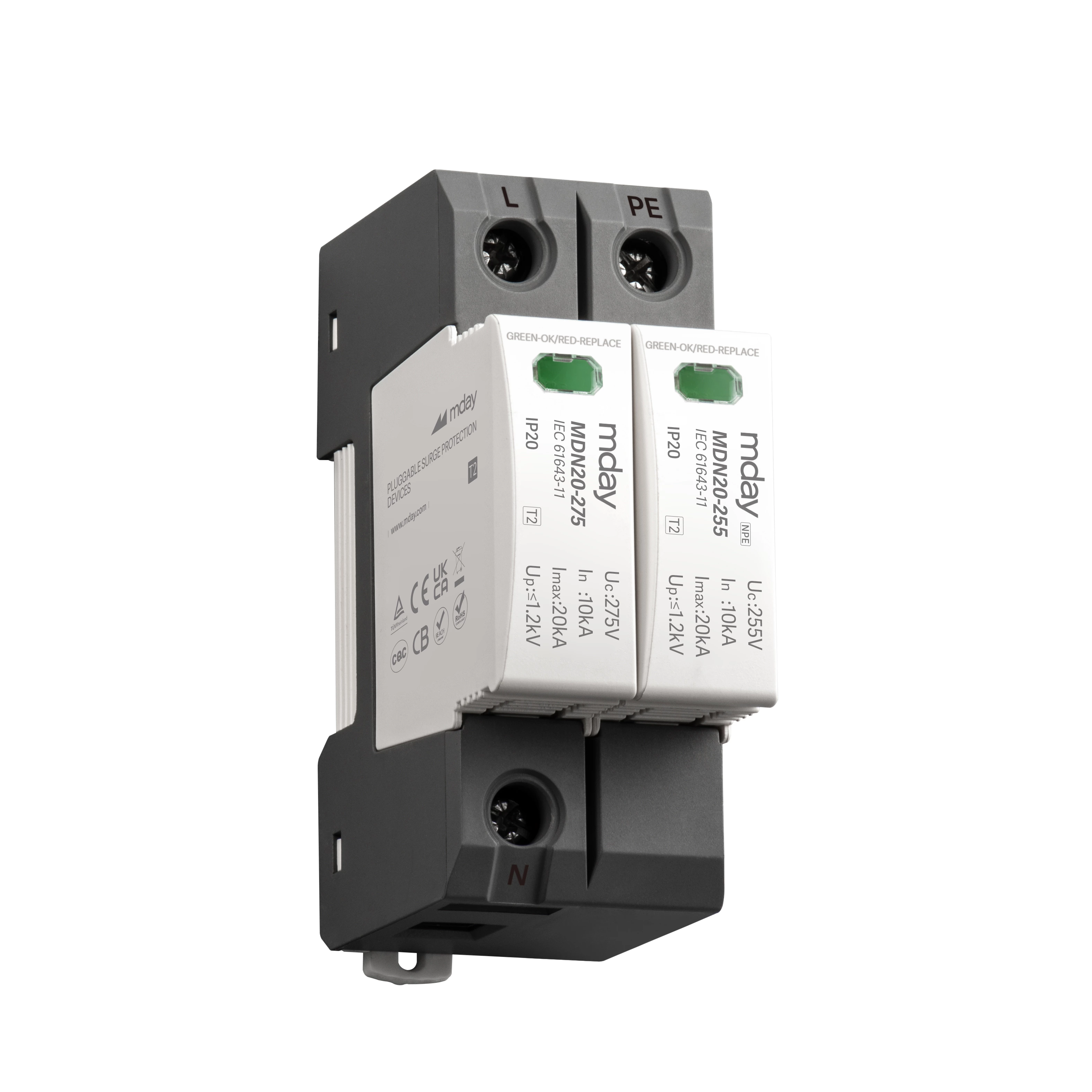Spark Gap Surge Protectors For Primary Protection
Spark gap surge protectors for primary protection must meet the highest requirements in terms of amplitude and specific energy of surge voltage or surge current, since they should protect against direct lightning strikes. In typical installation environments for main power distribution, the requirements for short-circuit withstand capability are often very high, and to be able to meet these requirements, powerful technologies such as spark gap technology are required.
Spark gap surge protection device for primary protection The working principle of a spark gap is initially very simple: two electrodes are placed at a specific distance from each other and form an insulating state. If there is a voltage between the two electrodes, causing the dielectric strength of the air in this space (approximately 3 kV/mm) to exceed the surge voltage, an arc is formed. The impedance of the arc is very low compared to the insulating state, where the impedance is in the gigaohm range, and therefore, so is the voltage drop across the spark gap.
This characteristic is very suitable for use as primary protection, releasing lightning currents: the lower the residual voltage of the spark gap, the lower the energy input that needs to be managed. With regard to the sudden change in impedance, and therefore also the voltage difference across the spark gap, the nonlinear characteristic is called voltage switching. A significant advantage brought about by low residual voltage is the lower load on the protected equipment due to the voltage being higher than the specified nominal voltage or maximum continuous voltage. For longer lightning current durations, the residual voltage of the spark gap is low and within the maximum continuous voltage of the protected device.
Spark gap surge protective device for primary protection, the spark gap is usually enclosed in a sturdy closed steel housing, so that during the discharge, the ionized gas produced by the arc does not leak into the environment. In addition, spark gaps are often triggered: they have additional wiring to support the complete ignition of the spark gap. This limits the voltage protection level to a very low level - significantly lower than the voltage generated based on the dielectric strength of air. Even though the installation environment of type 1 SPDs is generally not required, the voltage protection level of modern triggered spark gaps is usually at the level of the lowest overvoltage category I (based on the nominal voltage of the system).
A special feature of spark gap surge protectors for primary protection is the continuous current extinguishing capability Ifi. If the spark gap is ignited by the surge voltage, it represents a short circuit, driving current for the connected power network. Therefore, the spark gap must be able to interrupt the supply current by itself after the discharge process without triggering the upstream overcurrent protection device. The sequential current extinguishing capability indicates under what circumstances the expected short-circuit current installation position can be guaranteed. So the spark gap must be able to do two things:
• Release a large amount of energy from a short-lived lightning current
• Independently eliminate the continuous current from the powerful power supply network
When the lightning current passes, the best case is that the impedance of the spark gap is very low to keep the energy input as low as possible. However, in the case of continuous current, the impedance must be as high as possible to ensure rapid elimination. In order to withstand lightning current amplitudes of up to 50 kA on a power supply network with a possible short-circuit current of up to 100 kA. Therefore, today's spark gaps are usually complex in structure and consist of many separate functional components.
The above is an introduction to spark gap surge protectors for primary protection. However, in the line, the surge protectors used for secondary protection cannot handle direct lightning strikes and require discharge technology with fast response behavior. The editor will continue to introduce it to you.
